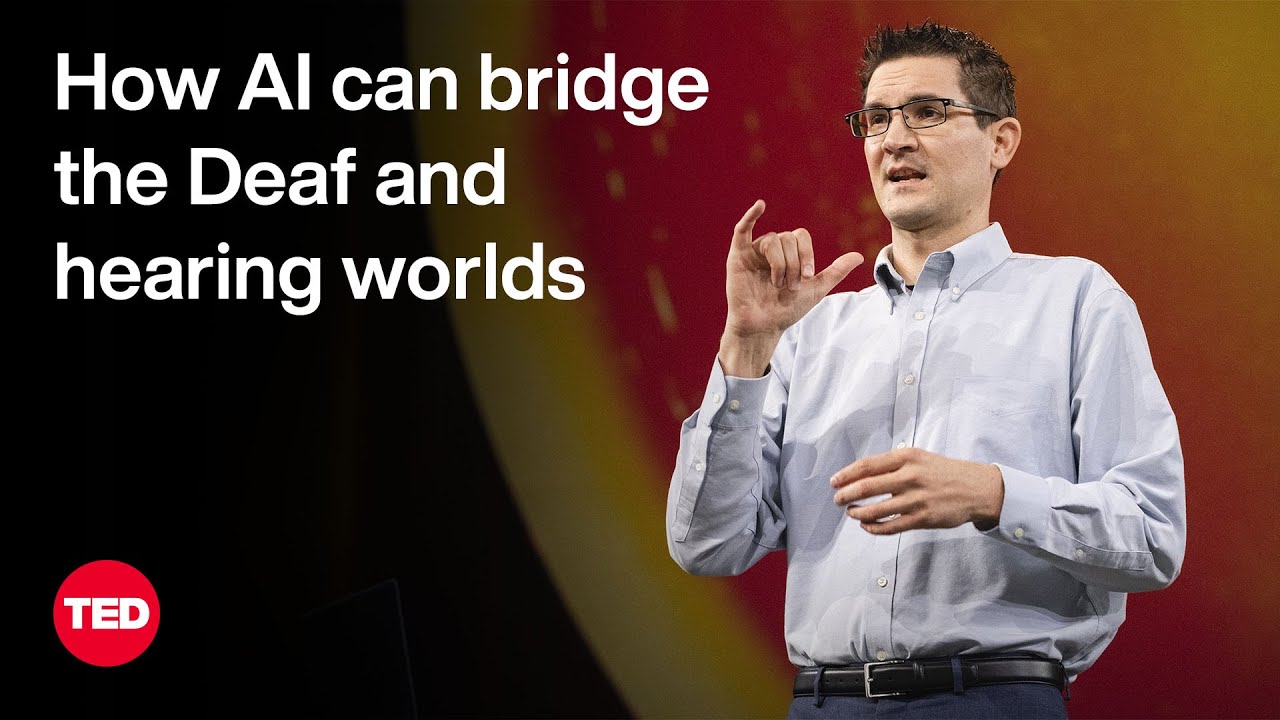In his TED talk, Adam Munder shares his experiences as a Deaf individual and highlights the communication barriers faced when interpreters are unavailable, emphasizing the need for better accessibility between Deaf and hearing communities. He introduces his AI-driven platform, OmniBridge, which translates American Sign Language into English, aiming to enhance communication and foster inclusivity for Deaf individuals in everyday interactions.
In the TED talk by Adam Munder, he shares his personal experiences as a Deaf individual navigating both the Deaf and hearing worlds. He begins by illustrating the challenges faced by Deaf people when interpreters are unavailable, recounting a frustrating incident at a doctor’s appointment where he was expected to rely on his young daughter to interpret for him. This highlights the significant communication barriers that exist in everyday situations, emphasizing the need for better accessibility and understanding between Deaf and hearing individuals.
Munder discusses the duality of his life, where he successfully manages personal and professional responsibilities while often relying on interpreters for communication. He notes that despite having the same qualifications and job responsibilities as his hearing peers, the lack of accessible communication tools creates an uneven playing field. This disparity is further exacerbated by the scarcity of qualified interpreters, particularly in Arizona, where the number of licensed interpreters is vastly outnumbered by the Deaf population.
To address these challenges, Munder introduces his innovative platform, OmniBridge, which aims to bridge the gap between the Deaf and hearing worlds. By leveraging artificial intelligence, the platform analyzes American Sign Language (ASL) signs and translates them into English. He acknowledges the complexity of ASL, where subtle nuances can alter meanings, and emphasizes the importance of capturing these details to facilitate genuine communication.
During the talk, Munder demonstrates the capabilities of OmniBridge through a live interaction with a volunteer acting as a receptionist. The software translates his signs into text while the receptionist speaks, showcasing a bidirectional conversation that reduces confusion and enhances understanding. This demonstration illustrates how technology can transform communication, allowing Deaf individuals to engage more fully in everyday interactions without relying on others for interpretation.
In conclusion, Munder emphasizes the potential of AI not only to revolutionize technology but also to foster human connections. His vision for OmniBridge is to create a seamless conversation between signed and spoken languages, ultimately leveling the playing field for Deaf individuals. By focusing on inclusivity and accessibility, Munder and his team aim to change the world, making communication more equitable and enriching for everyone involved.
